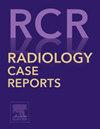Neonatal demise from a complex abdominal wall defect in a low-resource setting: A case study on the consequences of a fractured perinatal care cascade
Q4 Medicine
引用次数: 0
Abstract
Survival for neonates with abdominal wall defects (AWDs) exceeds 90% in high-income countries, yet mortality remains devastatingly high in many low-resource settings. This profound survival disparity reflects systemic deficiencies in the perinatal care cascade. We present a case of a preterm neonate with a complex AWD to exemplify the catastrophic consequences when this continuum of care is fragmented. A 32-year-old multiparous woman presented at 28 weeks gestation. Prenatal ultrasound identified a live fetus with a large, complex AWD; findings were ambiguous, with features suggestive of both gastroschisis (free-floating bowel) and a ruptured omphalocele (significant liver herniation, suggestion of a partial membrane). After counseling, she was referred for tertiary care, but transfer was not feasible due to systemic barriers. Two weeks later, at 30 weeks gestation, she presented in advanced preterm labor and delivered vaginally. The 1.5 kg male neonate was born without spontaneous cardiorespiratory activity (Apgar scores of 0 at 1 and 5 minutes) and had a large paraumbilical defect with massive evisceration of the liver and intestines. Resuscitation was unsuccessful. This case demonstrates that neonatal mortality from complex congenital anomalies in resource-limited environments is often a consequence of health system failures rather than an inevitability of the pathology itself. The diagnostic ambiguity of the defect was clinically secondary to the critical, sequential breakdowns in the care cascade: the inability to enact a timely transfer to a tertiary center for planned delivery and immediate access to pediatric surgical and neonatal intensive care. This outcome underscores the imperative to strengthen referral pathways, build capacity for specialized perinatal services, and invest in regionalized care to address the stark global inequities in survival for treatable congenital conditions.
低资源环境下复杂腹壁缺陷导致的新生儿死亡:围产期护理级联断裂后果的案例研究
在高收入国家,腹壁缺陷新生儿的存活率超过90%,但在许多低资源环境中,死亡率仍然高得惊人。这种深刻的生存差异反映了围产期护理级联的系统性缺陷。我们提出一个早产儿的情况下,一个复杂的AWD举例说明灾难性的后果,当这种连续性的护理是碎片化的。一位32岁的多胎妇女在妊娠28周时出现。产前超声鉴定出一个大而复杂的AWD活胎;结果不明确,特征提示胃裂(自由漂浮的肠)和脐膨出(明显的肝疝,提示部分膜)。咨询后,她被转到三级护理,但由于系统障碍,转移是不可行的。两周后,在妊娠30周时,她出现了晚期早产并顺产。这名体重1.5公斤的男婴出生时没有自发的心肺活动(1分钟和5分钟时Apgar评分为0),并且有一个巨大的脐旁缺陷,肝脏和肠道大量被内脏取出。复苏失败。该病例表明,在资源有限的环境中,复杂先天性异常导致的新生儿死亡往往是卫生系统失败的结果,而不是病理学本身的必然。该缺陷的诊断模糊性在临床上是继发于护理级联中关键的连续故障:无法及时转移到三级中心进行计划分娩,并立即进入儿科外科和新生儿重症监护。这一结果强调必须加强转诊途径,建设专业围产期服务能力,并投资于区域化护理,以解决可治疗先天性疾病患者生存方面的严重全球不平等现象。
本文章由计算机程序翻译,如有差异,请以英文原文为准。
求助全文
约1分钟内获得全文
求助全文
来源期刊

Radiology Case Reports
Medicine-Radiology, Nuclear Medicine and Imaging
CiteScore
1.10
自引率
0.00%
发文量
1074
审稿时长
30 days
期刊介绍:
The content of this journal is exclusively case reports that feature diagnostic imaging. Categories in which case reports can be placed include the musculoskeletal system, spine, central nervous system, head and neck, cardiovascular, chest, gastrointestinal, genitourinary, multisystem, pediatric, emergency, women''s imaging, oncologic, normal variants, medical devices, foreign bodies, interventional radiology, nuclear medicine, molecular imaging, ultrasonography, imaging artifacts, forensic, anthropological, and medical-legal. Articles must be well-documented and include a review of the appropriate literature.
 求助内容:
求助内容: 应助结果提醒方式:
应助结果提醒方式:


